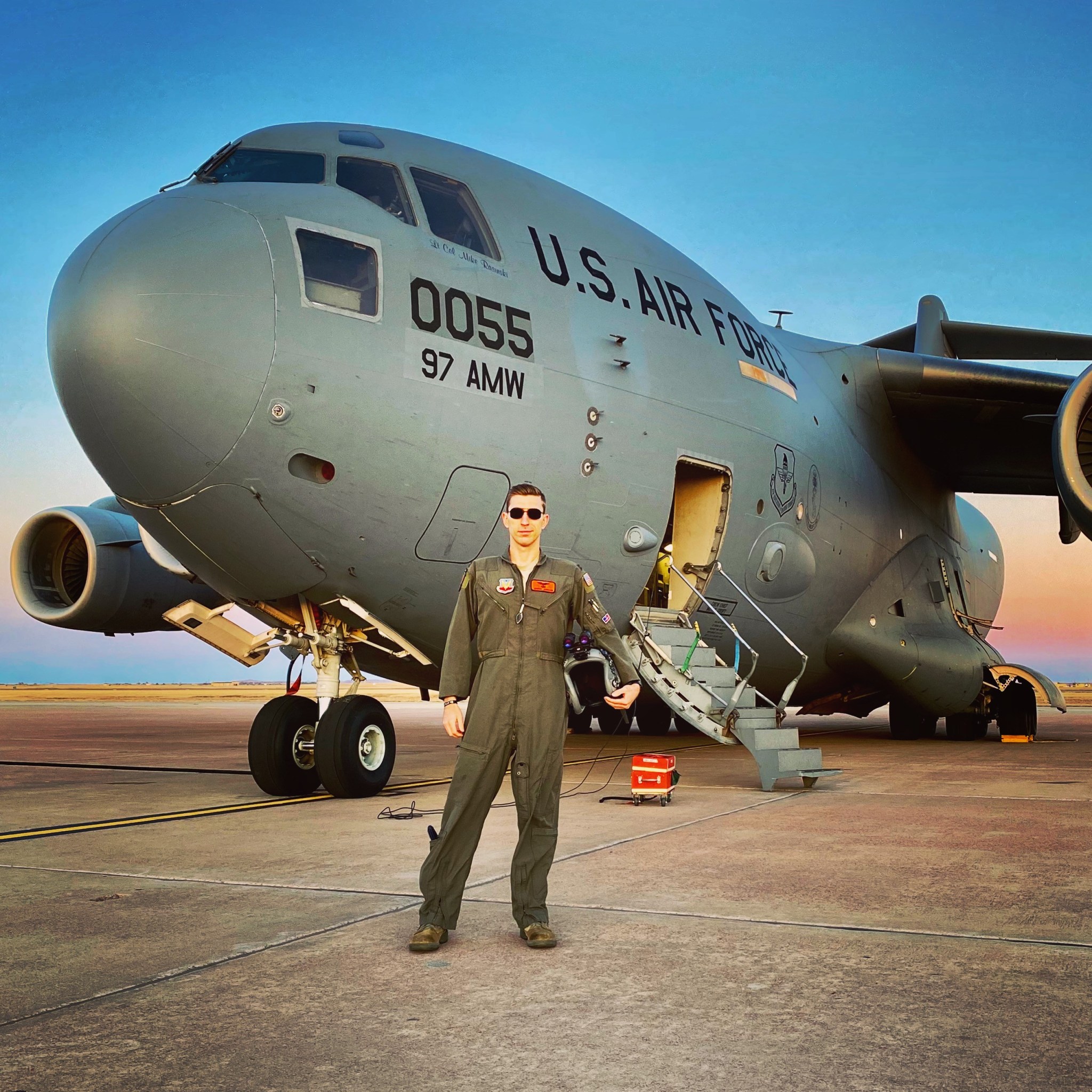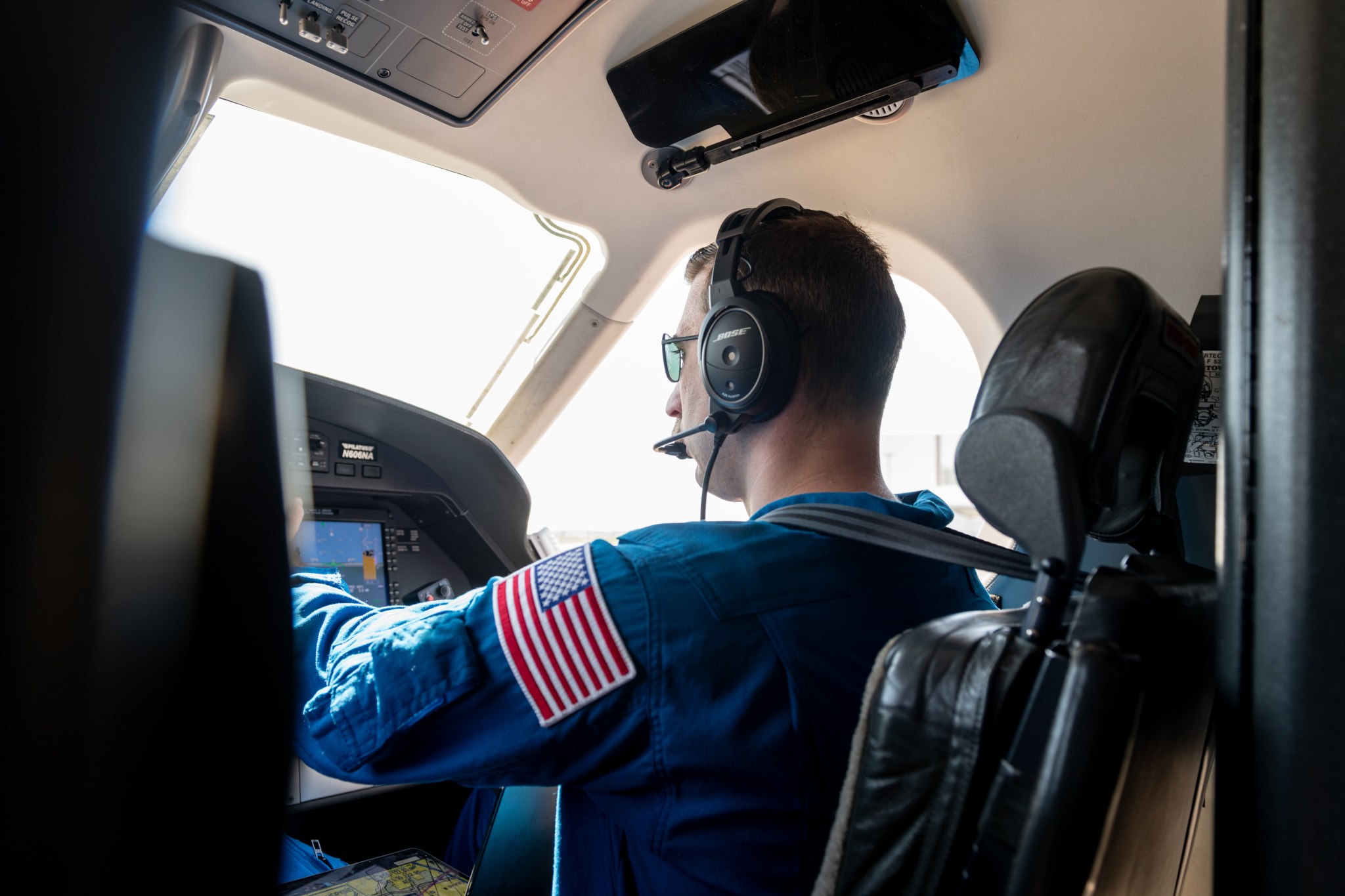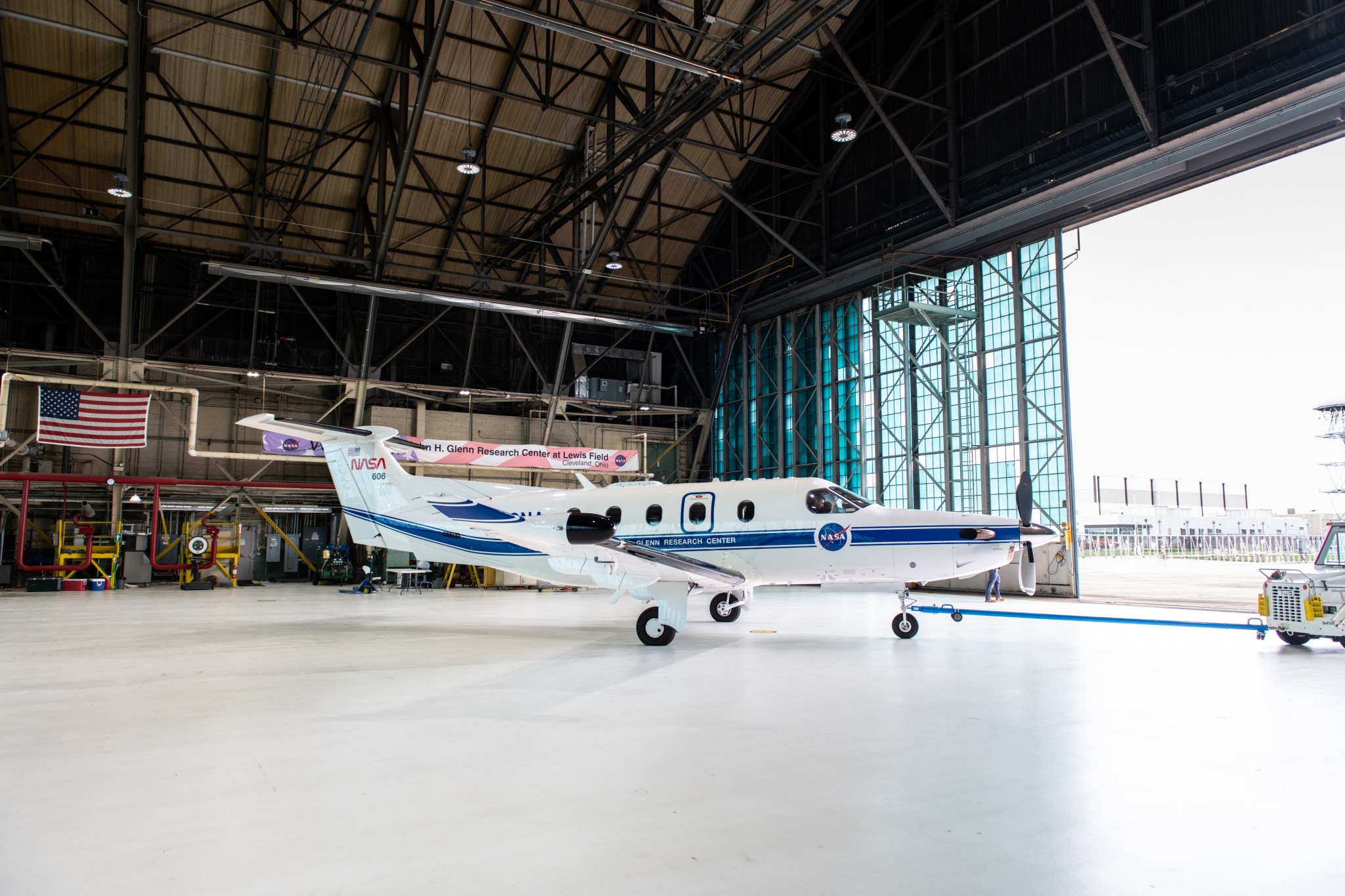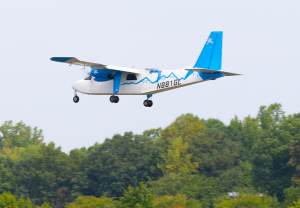
Jeremy Johnson laces his black, steel-toed boots and zips up his dark blue flight suit. Having just finished a pre-flight mission briefing with his team, the only thing on his mind is heading to the aircraft hangar and getting a plane in the air.
As he eases a small white-and-blue propeller aircraft down the hangar's ramp and onto the runway, he hears five essential words crackle through his headset: "NASA 606, cleared for takeoff."
This is a typical morning for Johnson, a research pilot and aviation safety officer at NASA's Glenn Research Center in Cleveland. Johnson flies NASA planes to support important scientific research and testing, working with researchers to plan and carry out flights that will get them the data they need while ensuring safety.
Johnson hasn't always flown in NASA planes. He comes to the agency from the U.S. Air Force, where he flew missions all over the world in C-17 cargo aircraft, piloted unmanned reconnaissance operations out of California, and trained young aviators in Oklahoma on the fundamentals of flying combat missions.

He's at Glenn for a four-month Department of Defense SkillBridge fellowship. The program gives transitioning service members an opportunity to gain civilian work experience through training, apprenticeships, or internships during their last 180 days of service before separating from the military.
"I think SkillBridge has been an amazing tool to help me transition into what it's like working somewhere that isn't the military," Johnson said. "In the Air Force, flying the mission was the mission. At NASA Glenn, the science-the research-is the mission."
By flying aircraft outfitted with research hardware or carrying test equipment, Johnson has contributed to two vital projects at NASA so far. One is focused on testing how well laser systems can transmit signals for communication and navigation. The other, part of NASA's research under Air Mobility Pathfinders, explores how 5G telecommunications infrastructure can help electric air taxis of the future be safely incorporated into the national airspace. This work, and the data that scientists can collect through flights, supports NASA's research to advance technology and innovate for the benefit of all.

"It's really exciting to see research hardware come fresh from the lab, and then be strapped onto an aircraft and taken into flight to see if it actually performs in a relevant environment," Johnson said. "Every flight you do is more than just that flight-it's one little part of a much bigger, much more ambitious project that's going on. You remember, this is a small little piece of something that is maybe going to change the frontier of science, the frontier of discovery."
Johnson has always had a passion for aviation. In college, he worked as a valet to pay for flying lessons. To hone his skills before Air Force training, one summer he flew across the country in a Cessna with his aunt, a commercial pilot. They flew down the Hudson River as they watched the skyscrapers of New York City whizz by and later to Kitty Hawk, North Carolina, where the Wright brothers made their historic first flight. Johnson even flew skydivers part-time while he was stationed in California.

Although he's spent countless hours flying, he still takes the window seat on commercial flights whenever he can so he can look out the window and marvel at the world below.
Despite his successes, Johnson's journey to becoming a pilot wasn't always smooth. He recalls that as he was about to land after his first solo flight, violent crosswinds blew his plane off the runway and sent him bouncing into the grass. Though he eventually got back behind the stick for another flight, he said that in that moment he wondered whether he had the strength and skills to overcome his self-doubt.
"I don't know anyone who flies for a living that had a completely easy path into it," Johnson said. "To people who are thinking about getting into flying, just forge forward with it. Make people close doors on you, don't close them on yourself, when it comes to flying or whatever you see yourself doing in the future. I just kept knocking on the door until there was a crack in it."









